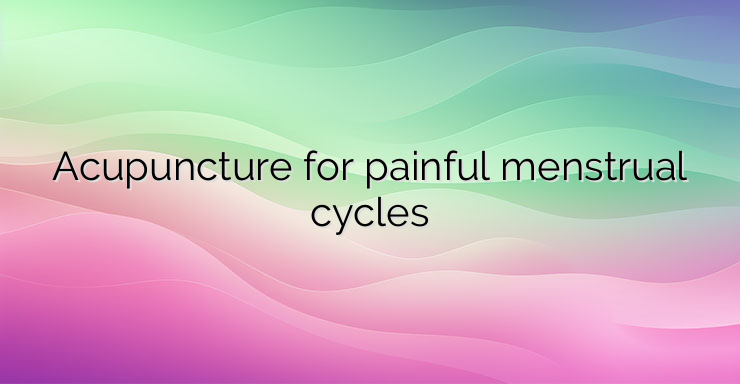Primary dysmenorrhea is defined as menstrual cramps without any identifiable pelvic pathology and affects most women during the reproductive period. Many studies report that the prevalence of primary dysmenorrhea ranges from approximately 50% to 90%, and 13% to 51% limit their daily activities, including being absent from school or work. Consensus guidelines for primary dysmenorrhea recommend NSAIDs and oral contraceptives as first-line treatment. However, some patients did not have pain relief with anti-inflammatories and experienced side effects such as nausea, dyspepsia, headache or drowsiness. In addition, contraceptives may not be suitable for women trying to conceive and may cause adverse effects such as nausea, vomiting, weight gain or vaginal bleeding. Acupuncture is a therapeutic method using the insertion of fine needles with the concepts of Yin and Yang and the circulation of Chi. Acupuncture works primarily by stimulating the nervous system, through local effects due to local antidromic axonal reflexes, and through the release of opioid peptides and serotonin. Today, acupuncture is considered part of alternative medicine. In particular, acupuncture is widely used to relieve various pain, including menstrual pain. From the perspective of traditional Chinese medicine, excessive menstrual pain is considered a “stagnation” condition. Stagnation refers to a lack of energy (in this case, blood) flowing through an organ. With menstrual cramps, it is believed that the stagnation takes place in the lower abdomen and is irritated or activated when the body tries to start shedding tissue, which happens during menstruation. Certain acupuncture points are believed to regulate blood flow through the abdominal cavity and relax the nervous system, which can help calm muscle contractions. Studies show that acupuncture is just as effective as over-the-counter anti-inflammatory drugs in reducing pain. Studies have found that acupuncture can help reduce the intensity of PMS and cramps and combat the symptoms of: Headaches; Dizziness; Nausea; Anxiety. Stress hormone levels also decrease after acupuncture treatment, which may explain why there are so many additional benefits, such as regulating blood pressure, calming nausea, and relieving period-related headaches. There are several different acupuncture points that are used in the treatment of menstrual complaints, depending on the location of the pain. For example, points like Liv 3 and Sp6 may be most effective if the pain is more centralized. On the other hand, if the pain is radiating outward, GB21 and Li4 can provide relief. References: https://www.ncbi.nlm.nih.gov/pmc/articles/PMC5999465/ https://www.yinovacenter.com/blog/menstrual-cramps/


Leave a Reply